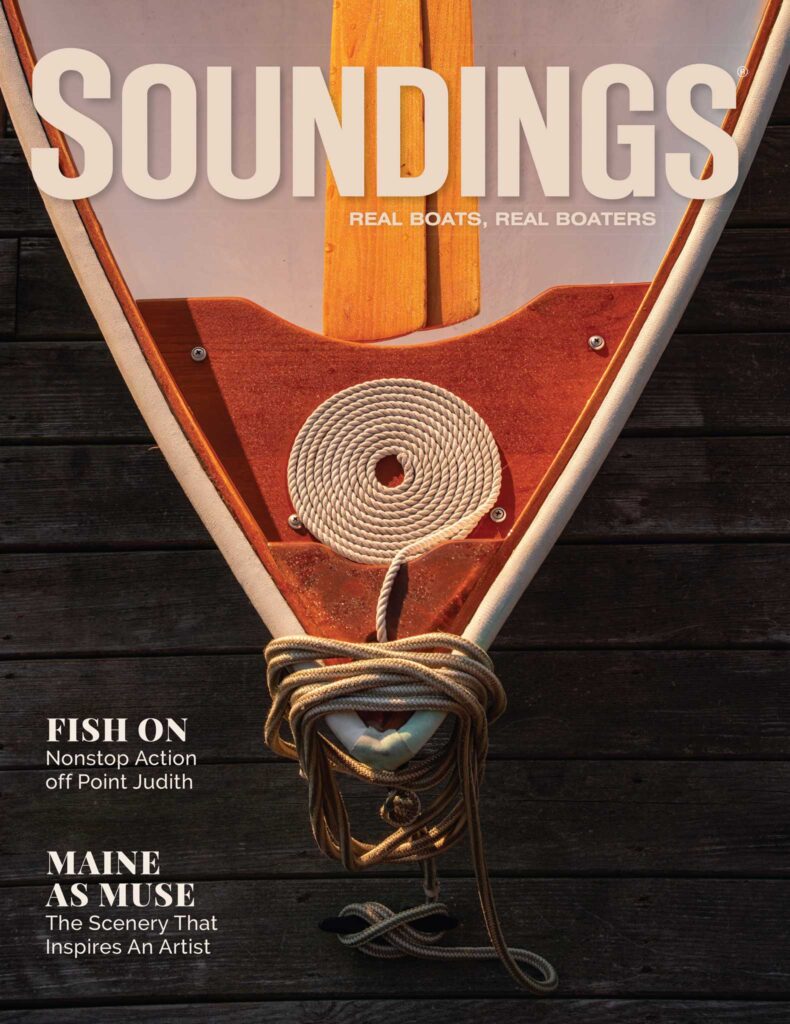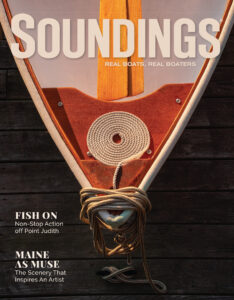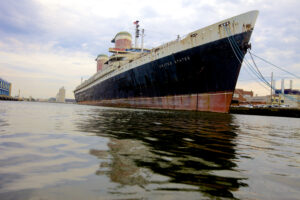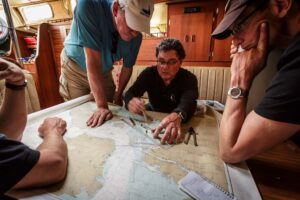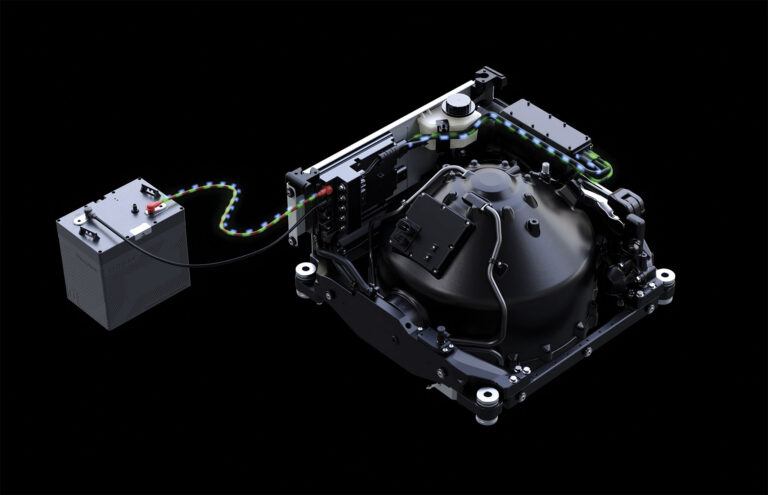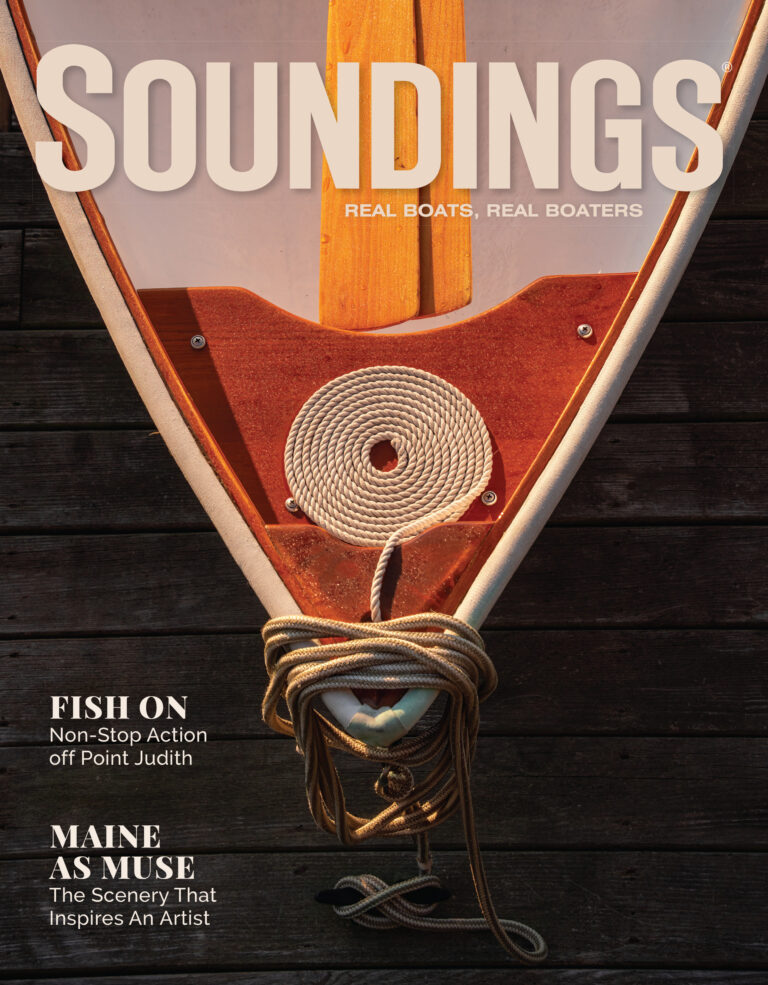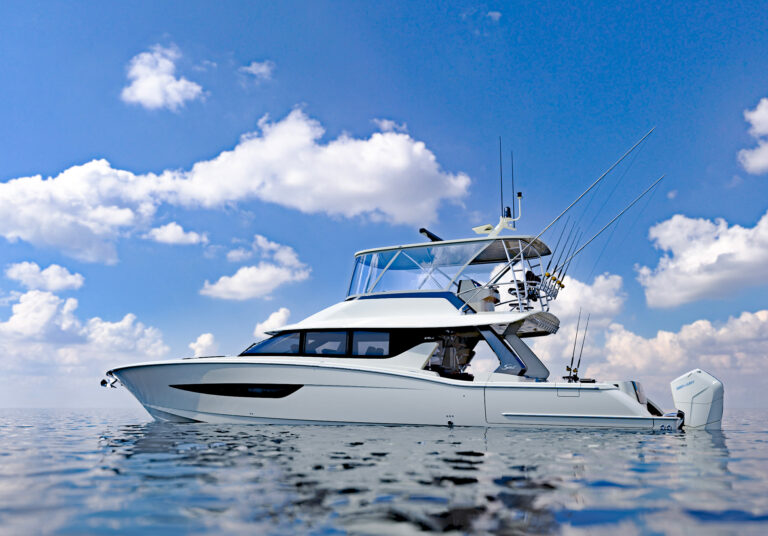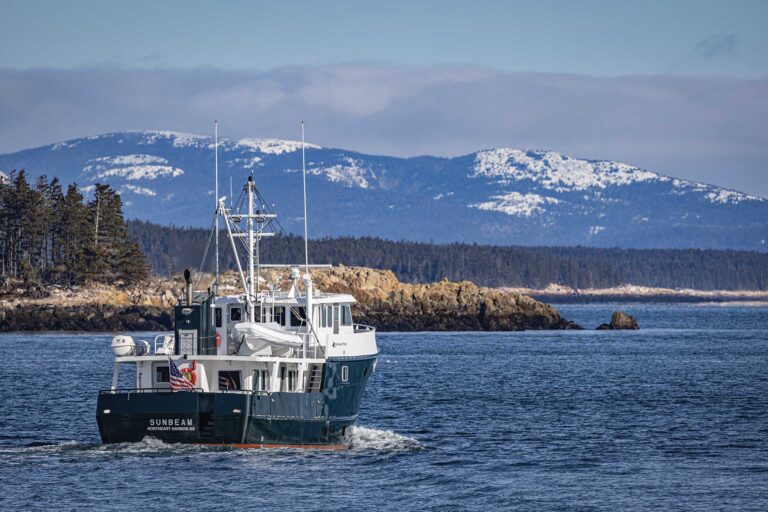The unique hull creates lift, reduces drag and improves performance
The unique hull creates lift, reduces drag and improves performance
In a world where the only constant seems to be change, nothing is safe or sacred — which puts conventional thinking at high risk. The progressive minds in yacht design no longer settle for incremental performance improvements but are on a mission to reshape the future with boats and ships that bear little resemblance to what we have known for so long.
This requires a blank sheet of patient paper and an open mind that resists the urge to compromise. In the end such ambitions can produce vessels that look strikingly different, which implies that commercial success is far from certain in an industry that firmly embraces “known knowns.” But every once in a while boaters will forget about traditions to risk a gander at a novelty and, perhaps, even become used to it.
Practitioners of nautical new-think are assembled at M Ship Co. (www. mshipco.com), a San Diego company that is confronting the world with the M-hull, a patented concept that can be either quiet, green and soft to lessen the impact of boating on the environment or loud, gray and mean to help the military respond to so-called asymmetrical threats. Best of all, it scales from 8-foot dinghies to 160-foot combat ships. A note to the uninitiated: Even though it looks like it has three bows, don’t confuse it with a trimaran.
“The M-hull eliminates the speed limitations of displacement craft,” says M Ship co-founder Chuck Robinson. “It’s a major breakthrough in hull design because the more pressure is captured in the hull tunnels, the higher the boat rises out of the water, the faster it goes and the less draft it has.”
In simple terms, an M-hull vessel generates bow wave like any other boat. However, it recaptures this wave immediately with its rigid side skirts, forcing it to spiral through the hull’s planing tunnels. There, it mixes with in-rushing air to create a cushion that pushes the hull higher out of the water, creating hydrodynamic and aerodynamic lift, which reduces drag and increases speed, according to the builder. Other reported benefits include better fuel efficiency, directional stability, wake suppression and a gentle ride with less slamming and rolling.
“If we use two or three M-hulls side by side, we only increase lift, not drag,” Robinson explains, “since even a triple M-hull would only have the two outside skirts immersed.”
Ten years ago Robinson made a splash with his M Ship partner Bill Burns by introducing the Canting Ballast Twin Foil system, which revolutionized the design of such record-chasing yachts such as the Volvo Open 70s and supermaxis. CBTF replaces a sailboat’s traditional fixed keel with an arrangement that uses electric power and hydraulics to shift the ballast that is suspended from a canting strut under the hull. The result: dramatic weight loss and performance gain.
“We specialize in taking ideas from the PowerPoint stage to the water, a process we call Rapid Empirical Innovation,” says Burns. “We envision the M-hull concept in military, commercial and recreational applications.”
Military
Winning the wars of the future, military experts argue, requires new tools because the enemy doesn’t wear uniforms, doesn’t stick to battle lines, and can strike anywhere at any time. In this context, naval warfare could leave the high seas and head for the beach or, more precisely, to shallow waters where slow, deep-draft vessels are all but useless. M Ship addressed this scenario with the Stiletto, an unusual vessel that has garnered national headlines and is sometimes dubbed the “Bat Boat.”
In a story about the Best Inventions of 2006, Time magazine called it “Low Rider.” With a miniscule draft of 2 feet, 6 inches, this 88-foot $6 million prototype of a double-M-hulled Littoral Combat Ship is powered by four 1,650-hp Caterpillar diesels that give it a top speed of 50-plus knots. Its angular shape reportedly makes it hard to pick up with radar. It has a 2,000-square-foot cargo hold and can be beached to deploy unmanned vehicles for reconnaissance on land. Or it can stay offshore to launch remote-controlled vessels and personnel in inflatables. Should the mission change, the Stiletto can change too, but within hours, not weeks.
The concept emerged from war games that simulated invasion scenarios and concluded that traditional naval vessels are ill-equipped to handle their tasks. They are large, cumbersome and lack maneuverability close to shore, all of which makes them vulnerable to short-range attack. As a World War II veteran who also served as deputy secretary of state under Henry Kissinger, Robinson is convinced that the Stiletto is exactly what the U.S. military needs to respond to a range of rapidly changing threats. It will take a different kind of power, however, to convince the Pentagon.
“We are in a David vs. Goliath battle,” he says. “We are seen as a threat to the establishment, and we are fighting resistance to innovation.”
M Ship, says Robinson, competes against the likes of General Dynamics, Raytheon and Lockheed Martin, megacorporations with deep pockets and a strong lobby on Capitol Hill. Meanwhile, the Office of Force Transformation showcased the Stiletto in this year’s Trident Warrior exercises, where new naval warfare technology is evaluated. The Navy uses footage of the Stiletto in recruiting clips that are shown in movie theaters.
Commercial
While the military is still hedging its bets on the M-hull concept, the idea has been making inroads in commercial markets. M Ship first showed this concept a few years ago on a 22-foot water taxi that lead to the development of a 65-foot Vaporetto for shuttling passengers between Marco Polo airport and the Canale Grande in the heart of Venice, Italy. Called Mangia Onda (Italian for “wave eater”), the design objective was to reduce wakes in the narrow canals that undermine the foundations of the city’s old buildings while still being capable of fast, efficient operation on open water.
Similar in concept but much greener in execution is the EcoBarca, a 19-foot M-hull boat with electric propulsion that was jointly developed with Duffy Electric Boats of Adelanto, Calif. Today, the EcoBarca serves as a courtesy shuttle for the guests of a Venice hotel.
Closer to home, a federally funded study in WashingtonState explores the feasibility of fast-ferry service between Bremerton and Seattle. The M-hull is among the designs being evaluated. “It’s an interesting approach in the category of air-lubricated hulls,” says Phil Osborne, lead scientist and project director at Pacific International Engineering, one of the firms conducting the study. “The benefits of the M-hull shape are a smooth ride, good seakeeping and wake suppression.”
In the late 1990s, wake damage and beach erosion in Puget Sound was blamed on fast ferries, which ultimately led to the cancellation of the program.
Recreational
Overshadowed by the Stiletto’s stark appearance, other M-hulled vessels have been launched in the recreational market. Two examples are the M-40, a sportfishing vessel (see accompanying story) and the Wahoo, the prototype of a simple and colorful 8-foot sailing dinghy.
“The Wahoo is an evolution of the M-hull and uses the captured energy of the bow wave to increase righting moment, which makes the boat stable,” says Burns. “The skirts are angled outward, so they provide side-force that otherwise would have to come from a centerboard.”
M Ship hasn’t pushed this idea, but it envisions the Wahoo as a possible water toy for resorts. Further along are plans to build more eco-friendly M-hulled vessels with Duffy Electric Boats. “After the success with the EcoBarca, we are working on a refined version of this concept,” says Marshall Duffield, CEO of Duffy Boats.
Later this year a 22-footer will be launched, followed by an 18- and a 16-footer. “Our customers love ease of use and stability, and the M-hull is more forgiving with weight in the bow or the stern than a catamaran,” Duffy says. The boats will be equipped with joystick control, a brushless DC motor, and Duffy’s patented Power Rudder drive system, with one unit in the bow and one in the stern.
Is M Ship looking for green merely by going green? Hardly. Military business is just too big to be ignored, and Robinson thinks the Stiletto is only the beginning. He says there are plans for a 160-foot triple-M-hull LCS with a beam of 90 feet that draws only 4 feet fully loaded. “Future versions of the Stiletto will accelerate the transfer of current U.S. capital warships to the Smithsonian museum,” he says.
In his view, the M-hull concept is ready to change boating, perhaps even more profoundly than canting ballast did. But only the future can tell if the boating world is ready for the M-hull.

